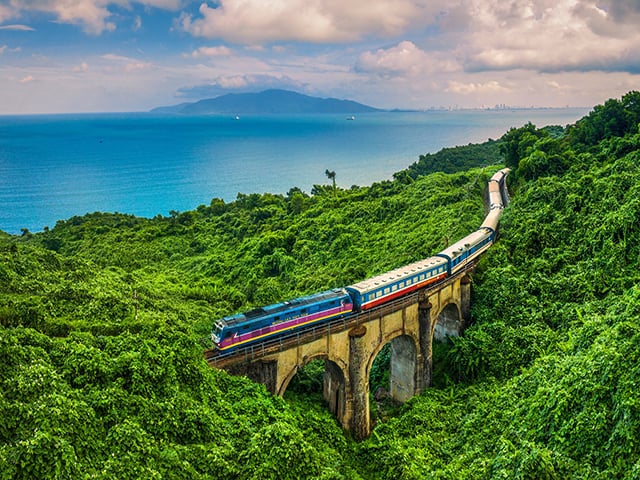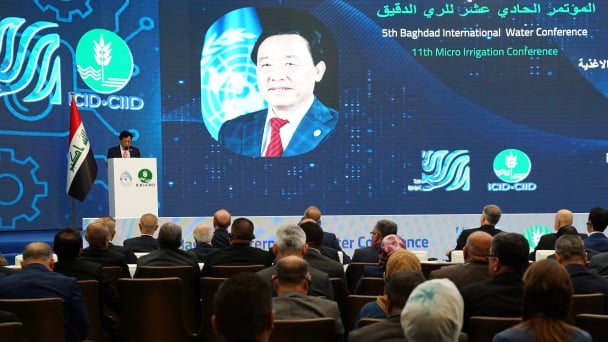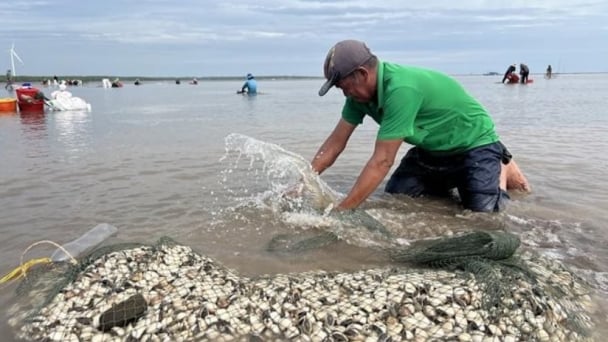May 29, 2025 | 20:10 GMT +7
May 29, 2025 | 20:10 GMT +7
Hotline: 0913.378.918
May 29, 2025 | 20:10 GMT +7
Hotline: 0913.378.918

The Lao Cai - Hanoi - Hai Phong railway line connects from Lao Cai to Nam Hai Phong station, spanning approximately 380 km. It links the international gateway port of Hai Phong with the port areas of Dinh Vu, Nam Do Son, and Lach Huyen.
According to the Ministry of Transport, preparing for the investment in this railway line is necessary and urgent. Based on the regulations of the State Budget Law and Decree 163/2016, and due to the pressing need to implement the project, the Ministry of Transport proposes that the competent authorities allocate VND 4 billion from the central budget reserve for 2024 to promptly carry out the necessary procedures for project investment research.
According to the Vietnam - China Joint Statement during the visit to Vietnam by General Secretary and President of China Xi Jinping on December 12-13, 2023, both sides agreed to promote the strategic development connectivity between the two countries. They will effectively implement the "Cooperation Plan on Connectivity within the Framework of Two Corridors, One Belt with the Belt and Road Initiative between Vietnam and China," and promote the connectivity of standard gauge railways across the Vietnam - China border. They will also study and promote the construction of the standard gauge railway from Lao Cai to Hanoi to Hai Phong.
Conclusion No. 49 dated March 28, 2023, of the Politburo on the orientation for the development of Vietnam's railway transport until 2030, with a vision to 2045, includes a direction: "By 2030, strive to commence construction of several routes connecting international gateway ports (such as Hanoi-Hai Phong, Bien Hoa-Vung Tau) and international border gates (such as Hanoi-Lao Cai, Hanoi-Lang Son)."
In Conclusion No. 72 dated February 23, 2024, of the Politburo on continuing the implementation of Resolution No. 13/2012 of the 11th Central Committee on building synchronous infrastructure to make our country an industrialized nation towards modernization, there is a direction: "Prioritize investment resources for the North-South high-speed railway project and the Lao Cai - Hanoi - Hai Phong routes..."
In Notice No. 57 dated February 19, 2024, the Government Office directed: "Focus on investing in the Lao Cai - Hanoi - Hai Phong route (strive to commence construction in 2025)."
Previously, the Ministry of Transport had issued a decision assigning the Railway Project Management Board to organize the preparation of a Pre-Feasibility Study Report for the investment project of the Lao Cai - Hanoi - Hai Phong railway line.
According to the Railway Network Planning for the period 2021-2030, with a vision to 2050, the Lao Cai - Hanoi - Hai Phong railway line is oriented to connect from Lao Cai to Nam Hai Phong station, with a length of approximately 380 km (connecting the international gateway port of Hai Phong with the Dinh Vu, Nam Do Son, and Lach Huyen port areas). It will be a double-track, 1,435mm standard gauge, electrified railway; the investment timeline is until 2030 and beyond 2030.
Translated by Mai Quang Huy

(VAN) FAO’s Director-General addresses the 5th Baghdad International Water Conference.
/2025/05/26/1716-4-nongnghiep-191706.jpg)
(VAN) Chain linkages, technological innovation, and raw material zoning are three strategic pillars for the coconut industry to strongly develop and elevate its position on the global agricultural map.
![Advanced mariculture – an inevitable trend: [4] Accompanied by scientists](https://t.ex-cdn.com/nongnghiepmoitruong.vn/608w/files/sohk/2025/05/13/1941-pgsts-vo-van-nha-140958_717.jpg)
(VAN) According to Assoc. Prof. Dr. Vo Van Nha, Director of the RIA III, the development of advanced offshore mariculture is no longer an option but an essential path for Vietnam’s fisheries sector.

(VAN) Vietnam is intensifying the development of mollusk farming areas that meet international standards, aiming for sustainable growth and enhancing its export position in the global seafood market.
![Advanced mariculture – an inevitable trend: [3] Policy-driven momentum](https://t.ex-cdn.com/nongnghiepmoitruong.vn/608w/files/doanhtq/2025/05/21/0104-0616-0348-nuoi-bien-170339_789.jpg)
(VAN) To ensure the success of offshore mariculture that uses advanced technologies, it is essential to establish supportive policies that inspire both individuals and enterprises to invest with confidence.
![Advanced mariculture – an inevitable trend: [2] Outstanding results](https://t.ex-cdn.com/nongnghiepmoitruong.vn/608w/files/sohk/2025/05/12/4632-4136-nuoi-bien-11-164117_819.jpg)
(VAN) Pilot models of high-tech offshore mariculture in Vietnam, particularly in the South Central Coast region, have demonstrated exceptional economic returns and sustainability, setting a new direction for the country’s aquaculture industry.
![Advanced mariculture – an inevitable trend: [1] Moving offshore](https://t.ex-cdn.com/nongnghiepmoitruong.vn/608w/files/phucpm/2025/05/18/0252-2436-nuoi-bien-6-162148_783.jpg)
(VAN) Mariculture using advanced technology and moving offshore is an inevitable trend, as nearshore areas increasingly reveal limitations.